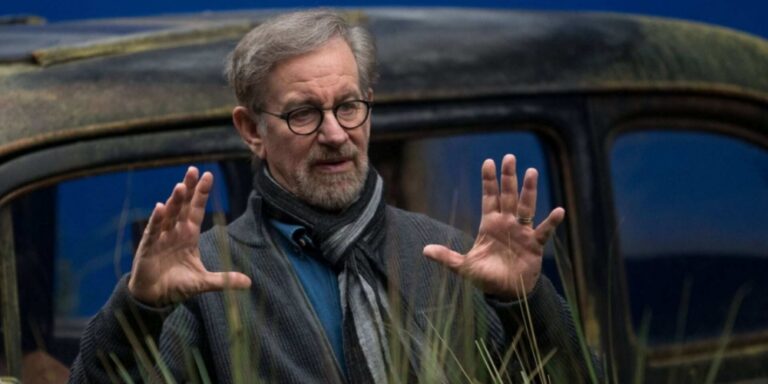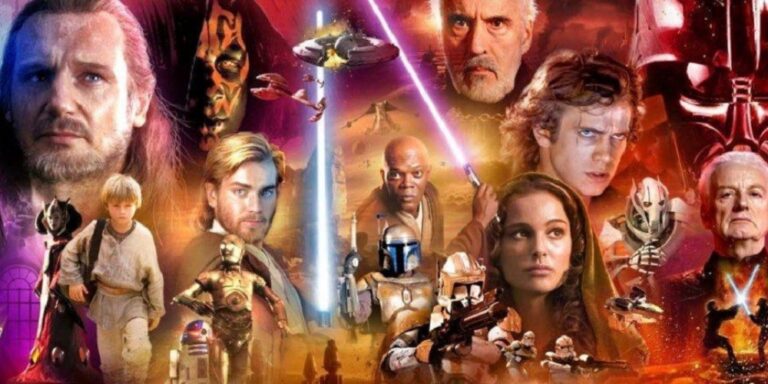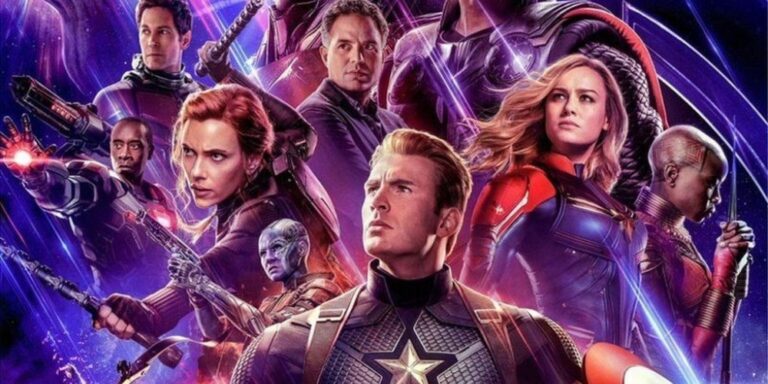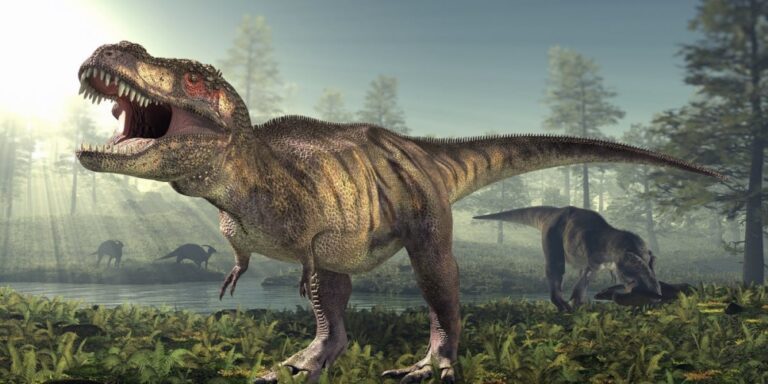Jurassic Park: Dinosaur VFX
Sethasaurus Rex and a tiny little bit of the Tricerajack
It’s often said that despite nearly 30 years having passed, the VFX dinosaurs in the original Jurassic Park have passed the test of time and continue to hold their own against the latest, greatest digital imaging technology is able to provide.
Many reasons are given for this.
One is that Jurassic Park was an extremely high budget, high profile movie directed by one of the most renowned filmmakers of our age, and that the animators were among the most skilled and experienced stop-motion animators in the industry. They knew what they were doing.
Another reason given is that the dinosaurs were only given minimum screen time, and where it was even remotely practical to do so, they relied on practical effects. That is to say, the dinosaurs were for the most part full scale foam puppets and animatronics. This in turn gave the animators something real to reference.
However there is one thing that rarely gets mentioned, something so vital that no ‘impossible’ special effect can work without it.
We wanted to believe.
We wanted the dinosaurs we were seeing on the screen to be real.
And this is an area where most modern effects laden movies fail: the audiences don’t care enough to want to believe. Instead, they see it for what it is, a bunch of poorly made computer graphics failing to engage with them.
So how did Steven Spielburg achieve this? Master filmmaker that he is, he made extensive use of two techniques that are now considered dinosaurs in the age of visual effects.
Human Scaled Framing
Contrary to popular belief, Jurassic Park was not a movie about dinosaurs. It was about people, regular people just like you and me, and how they dealt with the increasingly unlikely set of circumstances they repeatedly found themselves in.
Because of this, it was absolutely vital that the camera remain grounded as much as possible, with the characters featuring prominently in the frame, and not flying around randomly in the claws of some pterodactyl that for some reason has an eye for visual aesthetics.
Of course, it was the early 90s so such choices had as much to do with the limitations of technology as anything else. Options were available though for more epic scenes to unfold, such as helicopters and cranes, and the director didn’t make use of them. In fact, even the establishing shots of the island were human scaled. When they first arrive at the island, we get a good view of the environment from the air, but it makes sense for us to see it because the characters themselves are flying in by helicopter.
We see what they see.
By framing the movie at human scale, the dinosaurs are often too big to fit in the frame, so we only see something moving in the deep background—too far to be an immediate threat—or a small part of the dinosaur, say a head or a claw that can easily be achieved using practical effects. Professionally crafted practical effects look real because they are real. The audience doesn’t need to suspend their disbelief very far.
And if a carnivorous dinosaur really is that close, then it means the characters are in danger, and we get to see the fear in their eyes. They humanise the danger, making the audience want to believe that there truly is a threat. Once that happens, any shortcomings in the special effects get swallowed up into a narrative blind spot.
So what happened?
The Star Wars prequels happened. That’s what.
When George Lucas (if that is his real name) decided to take an even bigger dump over everybody’s childhood than he did with the Special Editions, he failed to heed the warning of Dr. Ian Malcolm: “Your scientists were so preoccupied with whether or not they could, they didn’t stop to think if they should.” He approached the movies with the mindset that, thanks to CG, anything he could think of could be seen on screen. He actually said as much, frequently.
So what would normally be a human-scaled battle sequence shot from the viewpoint of, what could be one of the people on the ground, in the heat of the action, is now scaled up to epic proportions. Yay CG! Now, it’s too big to fit in a human scaled frame, so we need pterodactyl-cam. Pterodactyl-cam stays far from the action, up in the sky, watching it all unfold, until something interesting happens somewhere. Then it swoops in to capture that action, moving round and round the subject to get it from all angles, and then off it flies again to get another taste of the big picture.
Assuming we’re even able to follow what in the hell is going on, which is unlikely at best, we’re now disorientated and disconnected. We no longer care-just tell us who won so we can get back on with the story.
And of course, with modern drone technology, you don’t even need a CG environment to pull this off. A common cliché in modern TV is to have a human-scaled framing of a person who might be talking or singing or whatever, and then with a silent whoosh the camera pulls back into a wide shot while rising up into the air, normally over a body of water. It looks cool, sure, but it’s like that TV effects box invented in the 80s which had different buttons for different transitions and effects. Suddenly, every transition in every TV show is a star wipe or a cylindrical roll or a page turn. Once the novelty wore off, transitions returned to being boring and non-intrusive once again, as they should be. That day is coming for clichéd drone footage too, and it can’t come soon enough.
Needless to say, shots like that ruin the human experience of movies.
Now this is not to say that non-grounded, wide scale and ‘impossible’ camera shots can’t be used, but they have to be used sparingly, appropriately, and in a way that doesn’t make the audience want to throw up.
The original Christopher Reeve Superman movie had lots of footage of him flying in external environments with the camera following him impossibly. As test footage shows, the effects team went to great lengths to ensure this was done gracefully and smoothly, so the feeling when watching it is exhilaration, not nausea. Also, it was mostly shot human scaled, even if the human in question was flying at the time. Christopher Reeve sold the flying effect by good acting. When we watched it, we wanted to believe he really could fly, and his performance clinched the deal.
The space battle scenes in the original Star Wars were for the most part shot very conservatively—a fixed camera panning to capture the action. Occasionally it would follow the ships, even through some dizzying maneuvers, but these shots were used sparingly. The ships became in effect an extension of the people in them, characters, so in a sense, these shots were also human scaled.
Keeping the camera with the people is how you make an audience care.
Human Scaled Pacing
Contrary to popular belief, Jurassic Park was not a movie about dinosaurs. It was about people, regular people just like you and me. I mean, is there a man among us who can honestly say they’re not a renowned paleontologist? Yup, just regular folk!
And because these regular people (and by proxy, us) are being taken out of their ordinary lives and forced into navigating an increasingly unlikely (and sometimes hostile) set of circumstances outside their comfort zone, it is vital that they (and by proxy, us) are given time to breathe.
So the process should begin with ordinary life, introduce something somewhat unlikely, and then give the characters time and screen space to process what they saw or what happened and adjust to their new reality. Then we introduce the next unlikely thing—slightly more unlikely than the thing that went before—rinse and repeat. Hint at a mountain by all means, but only really show the next mild slope, and then take a breather.
So how does this apply to Jurassic Park? The opening hints to us that there is a mountain by showing us a non-human eye, and somebody being swallowed up by foliage, but leaves it at that. Next our primary protagonists in their ordinary lives are invited to an island to see something special. Breathe. Next they fly into the island which is breathtaking. Breathe. Next, Ellie finds a leaf that hadn’t existed since the cretaceous period. Breathe. Grant sees an unusual tree with no leaves. Breathe. Up close, his eyes follow the tree trunk up and up and up until… that’s no tree, that’s a leg. Breathe. Up and up and up… it’s a brachiosaur. Breathe. He gets Ellie’s attention, when she sees it, she gasps and drops the leaf. It’s a peaceful dinosaur, minding its own business. They get out of the vehicle and take time to just take it all in, process it, adjust to their new reality. This is a happy time. Quite a lot of time then lapses before the next escalation, and again they’re given the time to process and adjust.
In short, the way to make a movie like this interesting to an audience is counter-intuitively to make it boring. Let the story unfold at a human pace so we can experience the story, rather than having everything happen in quick succession, so fast we can barely keep up. Nothing yanks you out of the narrative quicker than that, and once that happens, it’s impossible to care.
And because in Jurassic Park, we did care about the characters, their exhilaration when they first see the dinosaurs is shared by us. Their fear when their lives are in danger is real to us too. This activates the same narrative blindspot that human scaled framing produces, so the dinosaurs become real in our minds.
So what happened?
The Marvel Universe, probably.
In an irony that isn’t lost on this ‘author,’ the pacing of the escalation from ‘human scaled pacing’ to ‘stuck in fast-forward’ was actually human scaled, making it very difficult to determine when exactly it happened. However, since there are so many Marvel Universe movies during that time and they are all now stuck in fast-forward, I’m going to blame them anyway because why not.
Let’s look at a typical Marvel Universe non-origin story. It opens with a bunch of supercharged invincible-as-the-script-needs-them-to-be characters charging through a forest like the trees aren’t even there towards who knows what danger. I’m not a fan of these movies and I’m just assuming they all start like this… And then something happens and they’re fighting someone.
Who? Don’t know.
Actually I don’t even know who they are. Are they the good guys? Oh shit, a massive explosion that sends our heroes(?) flying and that crazy pteradactyl who got into Baz’s speed stash just flies straight through that shit and out the other side, but the heroes are all fine now and holy mother of fuck now they’re all flying and there’s this massive epic battle going on in the sky and now they’re over a city and a guy punches some other guy straight through three fucking buildings and what in the hell is even happening here?!
Anyway, they won. Probably. Three of them stand on the top of the smouldering remains of something and exchange wisecracks and quips for 30 seconds before holy mother of shit it’s a giant thing that’s bad for some reason so they all have to jump into action and that pterodactyl is just going crazy for this shit.
I have absolutely no idea what is happening. I don’t care about the characters or what happens to them because I can’t. To the extent that I can even follow along in the first place, they get knocked down in a way that would kill anyone else and just get up again, or have hyper-near misses with death at such an alarming frequency that it is obvious they are protected by the screenwriting gods and as such as never in any actual danger.
The only thing I can see is the special effects, as that is all they have to offer. And when special effects is the sole focus of the action, you’re going to see all the flaws and shortcomings exposed.




Now this is not to say that you can’t have high paced chaotic scenes at all. Jurassic Park had a scene with the T-Rex chasing the characters in an offroad vehicle through a forest. That was chaotic as hell, but it focused on the characters and their human reactions to the danger, which kept it grounded. When they got to relative safety, the pace slowed down again to give them a chance to breathe and adjust, and to behave like human beings. There are no dinosaurs to be seen during this time.
But we believe they’re real.
Many thanks for reading this article. We hope it was interesting, informative and entertaining. Follow us on social media or share our content on your own pages. It helps us grow so we can create more free content for you.
